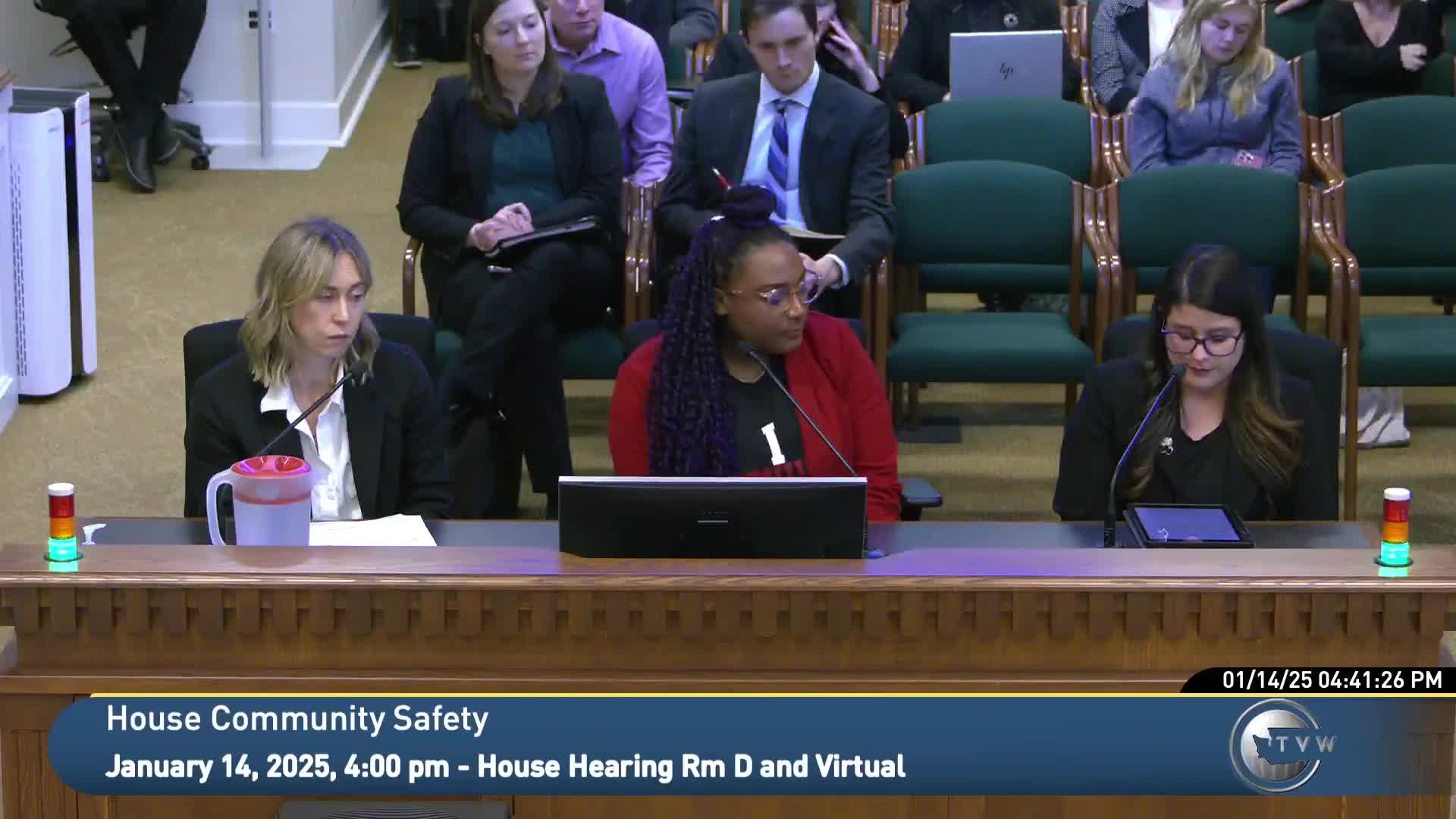JLARC: Aerospace tax preferences still reduce costs and support industry presence, but employment goals remain undefined
January 14, 2025 | Community Safety, Justice, & Reentry, House of Representatives, Legislative Sessions, Washington
This article was created by AI summarizing key points discussed. AI makes mistakes, so for full details and context, please refer to the video of the full meeting. Please report any errors so we can fix them. Report an error »

Pete Van Moorsil of the Joint Legislative Audit and Review Committee presented JLARC’s 2024 review of nine tax preferences that benefit Washington’s aerospace industry at the House Finance Committee on Jan. 14. JLARC estimated the biennial savings for the 2028–29 period at about $205,000,000 and reported beneficiaries saved about $95,000,000 in fiscal 2022 under current law (lower than earlier years due to repeal of a preferential manufacturing rate required by a World Trade Organization ruling).
The preferences include preferential B&O tax rates (some repealed or contingent on disputes), tax credits, sales-and-use tax exemptions, a property-tax exemption, and a leasehold-excise tax exemption. JLARC concluded the preferences continue to meet three stated objectives consistently used in prior reviews: (1) reduce the cost of doing business in Washington relative to other states; (2) encourage continued industry presence in Washington; and (3) support wages and benefits. JLARC was unable to determine whether the fourth stated objective—maintain and grow the aerospace workforce to legislatively expected levels—was met because the Legislature had not defined a clear performance metric for employment.
Washington remains a leading aerospace state: the industry contributed roughly $27.4 billion to U.S. GDP for aerospace manufacturing and more than 73,000 jobs across 234 establishments in 2022, second only to California in employment. Boeing delivered 528 commercial airplanes in 2023 (down from a prior high of 806), and JLARC reported the aerospace industry’s average wages (based on state-level unemployment insurance wage bills) are among the highest nationally (Washington ranked fourth in average aerospace wages behind Colorado, Massachusetts, and Connecticut on the 2022 data used).
JLARC recommended the Legislature clarify expectations for aerospace employment so future reviews can judge whether the preferences meet legislative goals, and suggested considering reverting the review cadence for aerospace preferences from every five years back to the standard 10-year cycle because JLARC’s conclusions have been consistent across multiple reviews.
Committee members asked about data sources and wage calculations, and JLARC staff said average wages were computed from state unemployment insurance wage bills divided by employee counts and represent mean, not median, wages; JLARC acknowledged limitations in assessing median compensation or specific executive compensation effects. JLARC also noted the 2020 legislative repeal of a preferential manufacturing rate followed a WTO finding that the rate violated international trade rules.
The preferences include preferential B&O tax rates (some repealed or contingent on disputes), tax credits, sales-and-use tax exemptions, a property-tax exemption, and a leasehold-excise tax exemption. JLARC concluded the preferences continue to meet three stated objectives consistently used in prior reviews: (1) reduce the cost of doing business in Washington relative to other states; (2) encourage continued industry presence in Washington; and (3) support wages and benefits. JLARC was unable to determine whether the fourth stated objective—maintain and grow the aerospace workforce to legislatively expected levels—was met because the Legislature had not defined a clear performance metric for employment.
Washington remains a leading aerospace state: the industry contributed roughly $27.4 billion to U.S. GDP for aerospace manufacturing and more than 73,000 jobs across 234 establishments in 2022, second only to California in employment. Boeing delivered 528 commercial airplanes in 2023 (down from a prior high of 806), and JLARC reported the aerospace industry’s average wages (based on state-level unemployment insurance wage bills) are among the highest nationally (Washington ranked fourth in average aerospace wages behind Colorado, Massachusetts, and Connecticut on the 2022 data used).
JLARC recommended the Legislature clarify expectations for aerospace employment so future reviews can judge whether the preferences meet legislative goals, and suggested considering reverting the review cadence for aerospace preferences from every five years back to the standard 10-year cycle because JLARC’s conclusions have been consistent across multiple reviews.
Committee members asked about data sources and wage calculations, and JLARC staff said average wages were computed from state unemployment insurance wage bills divided by employee counts and represent mean, not median, wages; JLARC acknowledged limitations in assessing median compensation or specific executive compensation effects. JLARC also noted the 2020 legislative repeal of a preferential manufacturing rate followed a WTO finding that the rate violated international trade rules.
View full meeting
This article is based on a recent meeting—watch the full video and explore the complete transcript for deeper insights into the discussion.
View full meeting
